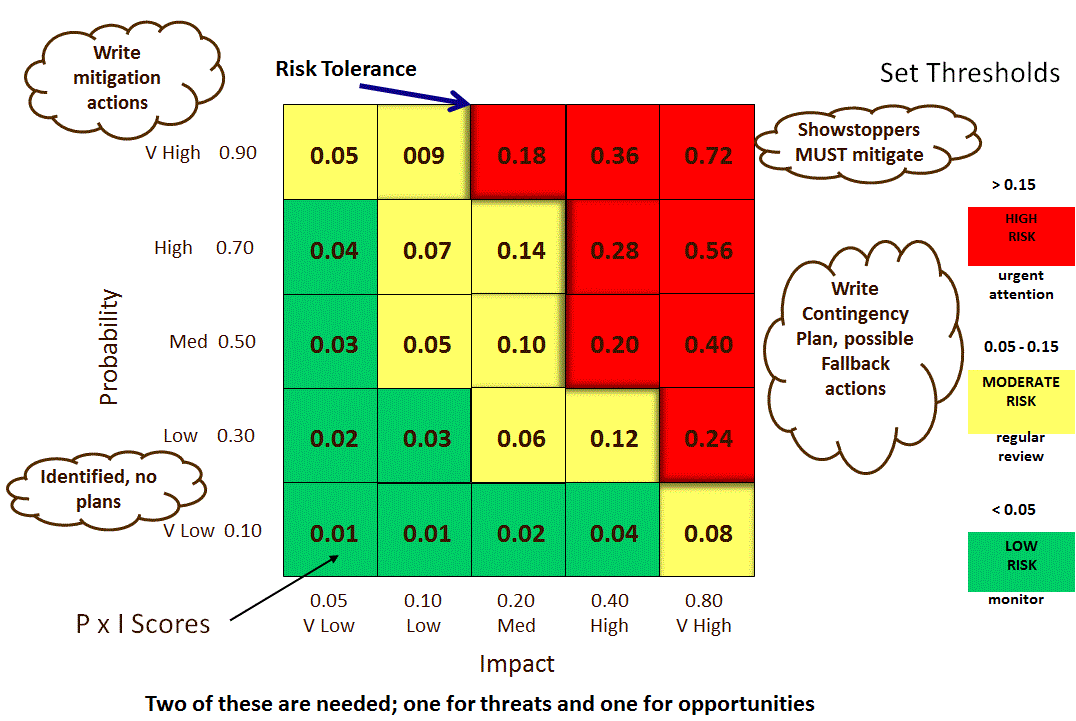

Risk aversion is the reluctance of a person to accept a bargain with an uncertain payoff rather than another bargain with a more certain, but possibly lower, expected payoff.It may also perform stress testing, using adverse scenarios. The institution can also calculate the scenario-weighted expected return (which figure will indicate the overall attractiveness of the financial environment).
#Risk probability of undesirable outcome how to
Then it will be in a position to consider how to distribute assets between asset types (i.e., asset allocation). It might further seek to determine correlations and assign probabilities to the scenarios. It might consider sub-sets of each of the possibilities. Another method is scenario analysis, which involves the process of analyzing possible future events by considering alternative possible outcomes.įor example, a financial institution might attempt to forecast several possible scenarios for the economy (e.g., rapid growth, moderate growth, slow growth), and it might also attempt to forecast financial market returns (for bonds, stocks, and cash) in each of those scenarios.

Ideally, uncertainty and sensitivity analysis should be run in tandem. Sensitivity analysis is the study of how the uncertainty in the output of a model (numerical or otherwise) can be apportioned to different sources of uncertainty in the model input.Ī related practice is uncertainty analysis which focuses rather on quantifying uncertainty in model output. One such way is to conduct a sensitivity analysis. There are different ways to measure and prepare to deal with risks as well. For example, market risk involves the risk of losses in position due to movement in market positions.
international risk (including currency risk)Įach of these risks addresses an area in which some sort of volatility could forcibly alter the plan of firm managers. There are numerous kinds of risks to be taken into account when considering capital budgeting including: Risks such as these affect sales, which in turn affect the amount of operating leverage a company should utilize. Possible Business Risks: This chart represents a list of the possible risks involved in running an organic business. Potential losses themselves may also be called "risks. The notion implies that a choice having an influence on the outcome exists (or existed). Risk is the potential that a chosen action or activity (including the choice of inaction) will lead to a loss (an undesirable outcome). In order to discuss this further, we should look into defining the concept or risk. When taking on this planning process, managers must take into account the potential risks of the investment not panning out the way they plan for it to, for any number of reasons. risk: The potential that a chosen action or activity (including the choice of inaction) will lead to a loss (an undesirable outcome).Ĭapital budgeting (or investment appraisal) is the planning process used to determine whether an organization's long term investments, such as new machinery, replacement machinery, new plants, new products, and research development projects are worth pursuing. capital budgeting: The planning process used to determine whether an organization's long term investments, such as new machinery, replacement machinery, new plants, new products, and research development projects are worth pursuing. There are different ways to measure and prepare to deal and plan for these risks, including sensitivity analysis, scenario analysis, and break-even analysis among others. Each of these risks addresses an area in which some sort of volatility could forcibly alter the plan of firm managers. There are numerous kinds of risks to be taken into account when considering capital budgeting. The risk that can arise here involves the potential that a chosen action or activity (including the choice of inaction) will lead to a loss. Capital budgeting (or investment appraisal) is the planning process used to determine whether an organization's long-term investments are worth pursuing.






 0 kommentar(er)
0 kommentar(er)
